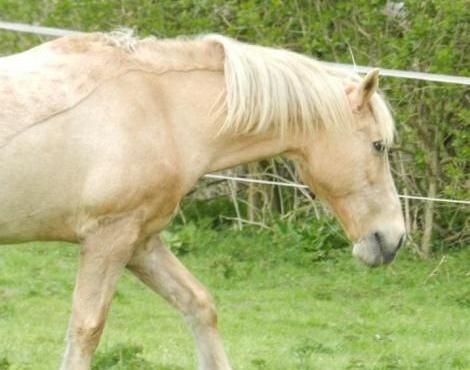
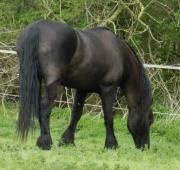
Horses evolved over 50 million years fromsmall many toed animals to the big beautiful, single-toed horses of today. The modern horse has been domesticated around the world for many reasons including transportation and battle.
Horses tend to live for about 30 years, and the oldest recorded horse at age 56 died in 2007. Horses graze on plant matter and vegetation, preferably tender green grass. The height of a horse is measured in hands, 1 hand being the same as 10cm (4 inches). The age of the horse is estimated by the pattern of tooth wear in his mouth.
An adult female is called a mare, and a young female is called a filly. An adult male is a stallion, and a young male is a colt. An unweaned baby of either sex is a foal. Castrated males and spayed females are called geldings. Mares carry their young inside them for approximately 11 months. When the baby horse is born, the young horse is often able to stand and then run about not long after birth. A mare comes into season one month after her foal is born. If she is remated then, she will have a foal at the same time each year.
The horses' hoofs are made out of horn which comes in different colors, with black being most common. Horses with white feet often have white hoofs, which are more brittle than pigmented ones. Appaloosa horses often have striped hoofs consisting of both pigmented and white hoof material.
There are thought to be more than 300 different breeds of horse found around the world today, each being bred for a purpose. Enormous draft horses such as Clydesdales pull heavy wagons, lighter saddle horses are for riding, and pony breeds are suitable for children and small adults. Miniature horses (30" and under) are primarily pets, though some have been used to guide blind people.
Horses have remarkable hearing and are almost able to have 360 degree hearing. The sense of smell of the horse is better than that of a human but the horse tends to rely more on vision than smell. Their field of monocular vision is almost 360 degrees with a narrower field of binocular vision in front and slightly to the sides. Horses have a blind spot directly in front of the nose and directly behind them. For this reason it is better to approach from the side. Whether they can see color is inconclusive. They do have much better night vision than humans.
Horses have an advanced sense of taste which allows the horse to sort through grasses and grains to find the things that the horse would most like to eat. Horses generally will not eat plants that are poisonous, but when the horse cannot find more adequate food, the horse will eat plants that contain toxins. A horse's gut is designed to have food flowing through it almost continually, and horses graze most of the day if allowed.
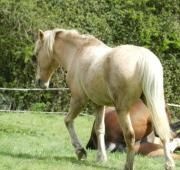
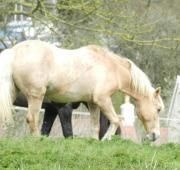
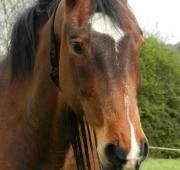
Horse Facts
| Kingdom: | Animalia |
| Phylum: | Chordata |
| Class: | Mammalia |
| Order: | Perissodactyla |
| Family: | Equidae |
| Genus: | Equus |
| Scientific Name: | Equus Caballus |
| Type: | Mammal |
| Diet: | Herbivore |
| Size: | 142-163cm (56-64in) |
| Weight: | 380-550kg (840-1,200lbs) |
| Top Speed: | 64km/h (40mph) |
| Life Span: | 25-30 years |
| Lifestyle: | Herd |
| Conservation Status: | Threatened |
| Colour: | Brown, White, Black |
| Skin Type: | Hair |
| Favourite Food: | Grass |
| Habitat: | Small forests and grassland |
| Average Litter Size: | 1 |
| Main Prey: | Grass, Fruit, Leaves |
| Predators: | Human, Wolf, Bears |
| Special Features: | Long, thin legs and long mane and tail |



